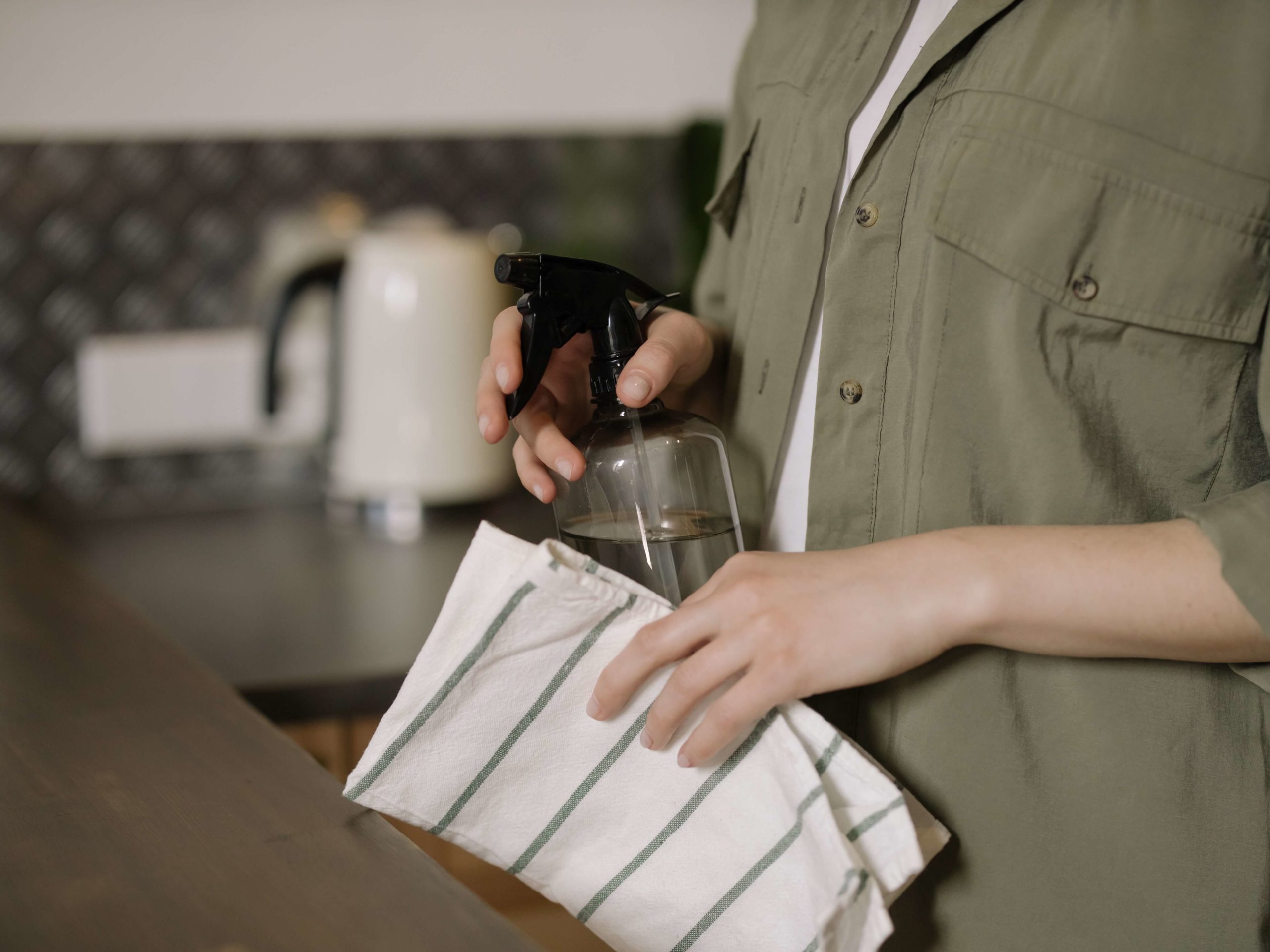
The Cleaner Crisis
With fall quickly approaching, we are beginning to spend more and more time indoors. This means that now is the perfect time to take a closer look at the products you are using to clean your home. You may not realize it, but 99% of the commercial cleaning products you are using on a daily basis are endocrine disrupters and known carcinogens. When trying to conceive or if you have already given birth, it is crucial to get all of the toxic chemicals out of your home to ensure you and your family are not being exposed to the myriad of endocrine disrupters that saturate modern-day cleaning products.
A 2018 study published by the Canadian Medical Association Journal found that toxins in household cleaners can lead to childhood obesity, which as we know, can lead to many other serious health outcomes. Despite their known dangers, toxic cleaning chemicals are everywhere in supermarket aisles and can be easily purchased online. Despite the risk, they continue to be sold in large quantities putting our health at risk. Environmental Protection Agency (EPA) standards are known for being lax and greenwashing subpar “green” products, which has left consumers with limited options. The EPA’s low standards and reluctance to properly regulate toxic chemicals have left consumers with no safe commercial alternatives.
There are reasons why these chemicals are just now being recognized as “forever chemicals” because they are not biodegradable and have disastrous long-term effects. Many of which are now being tracked by the EPA. Bleach, sodium hydroxide, PFAS, and other petrochemicals are not only harmful to us in our homes, but are extremely pervasive. Eventually, these chemicals end up in our water supply, poisoning marine life for decades to come. Once that occurs, they will make their way back into our food supply. It is a vicious cycle, but we have more control over it than we think.
An excellent site to become familiar with is EWG.com. You can enter your cleaning products (& makeup) into their database and see how toxic your current household products are.
Most adults have been conditioned from an early age to associate brand power with results. Windex equals the cleanest windows and Clorox Bleach equals the cleanest toilet bowl. However, this could not be further from the truth. While you may be successful at wiping away some of the dirt and grime on your window or your toilet bowl, you are simply replacing the dirt with dangerous carcinogenic chemicals that should have no place in your home.
All of the brand-name chemical cleaners that we have been groomed to believe are superior to natural ingredients can and should be replaced with your own DIY cleaning mixtures. You can benefit a great deal from homemade cleaning solutions, which will protect you and your family from unnecessary chemical exposures while saving you a ton of money!
Windex alternative – 2 cups of water, 1/2 cup of Vinegar (add any essential oils you like to smell around the house)
Counter Cleaner – 1 cup water, 1 cup Vinegar, a tablespoon of baking soda (add essential oils to this also)
Toilet Bowl Cleaner – Sprinkle baking soda into the toilet bowl, top with vinegar, close the lid and let sit for 30 minutes then scrub with your toilet scrubber
Kitchen/Bathroom Scrub – Mix equal parts baking soda, kosher salt and add any essential oils you like.
Laundry Detergent – Use a third cup of Vinegar, add a scoop of baking soda and a few liberal squirts of Dr. Bronner’s liquid Castille soap. You will be shocked by how clean and fresh your clothes will feel after ditching your typical laundry detergent and replacing with DIY detergent!
You can clean anything and everything with a combination of Vinegar, Baking Soda, Liquid Castille soap and any of your favorite essential oils. Your house will not only be cleaner when its surfaces are free of forever chemicals, but you can also have peace of mind knowing you are protecting your family from dangerous substances that should have no place in the modern-day family home.
Please note, never under any circumstances mix vinegar and bleach together. This creates a highly dangerous chlorine gas. If you ever feel sick while cleaning or think you may have mistakenly mixed vinegar and bleach, leave the room and go outside to get fresh air!
References:
April 06, 2022 C. L. M. M. G. (2022, August 11). “Forever chemicals” called pfas show up in your food, clothes, and home. NRDC. Retrieved September 12, 2022, from https://www.nrdc.org/stories/forever-chemicals-called-pfas-show-your-food-clothes-and-home
Brigitt Earely. (2021, April 30). Going green? the pros swear by these homemade cleaning solutions. Oprah Daily. Retrieved September 12, 2022, from https://www.oprahdaily.com/life/g30666676/homemade-cleaners/
Jackson, J. (2021, October 18). What common household items contain “Forever chemicals” Biden Admin. looks to restrict? Newsweek. Retrieved September 12, 2022, from https://www.newsweek.com/what-common-household-items-contain-forever-chemicals-biden-admin-looks-restrict-1639978
Keith, M. (n.d.). The EPA wants to regulate hazardous ‘Forever Chemicals,’ which are found in items like pizza boxes, nonstick pans, and cleaning products. Business Insider. Retrieved September 12, 2022, from https://www.businessinsider.com/epa-to-regulate-hazardous-forever-chemicals-household-items-2021-10
Sleight, M. (2021, December 9). What are Pfas? the risks of Forever Chemicals in your home, and what you can do. CNET. Retrieved September 12, 2022, from https://www.cnet.com/home/security/what-are-pfas-the-risks-of-forever-chemicals-in-your-home-and-what-you-can-do/


